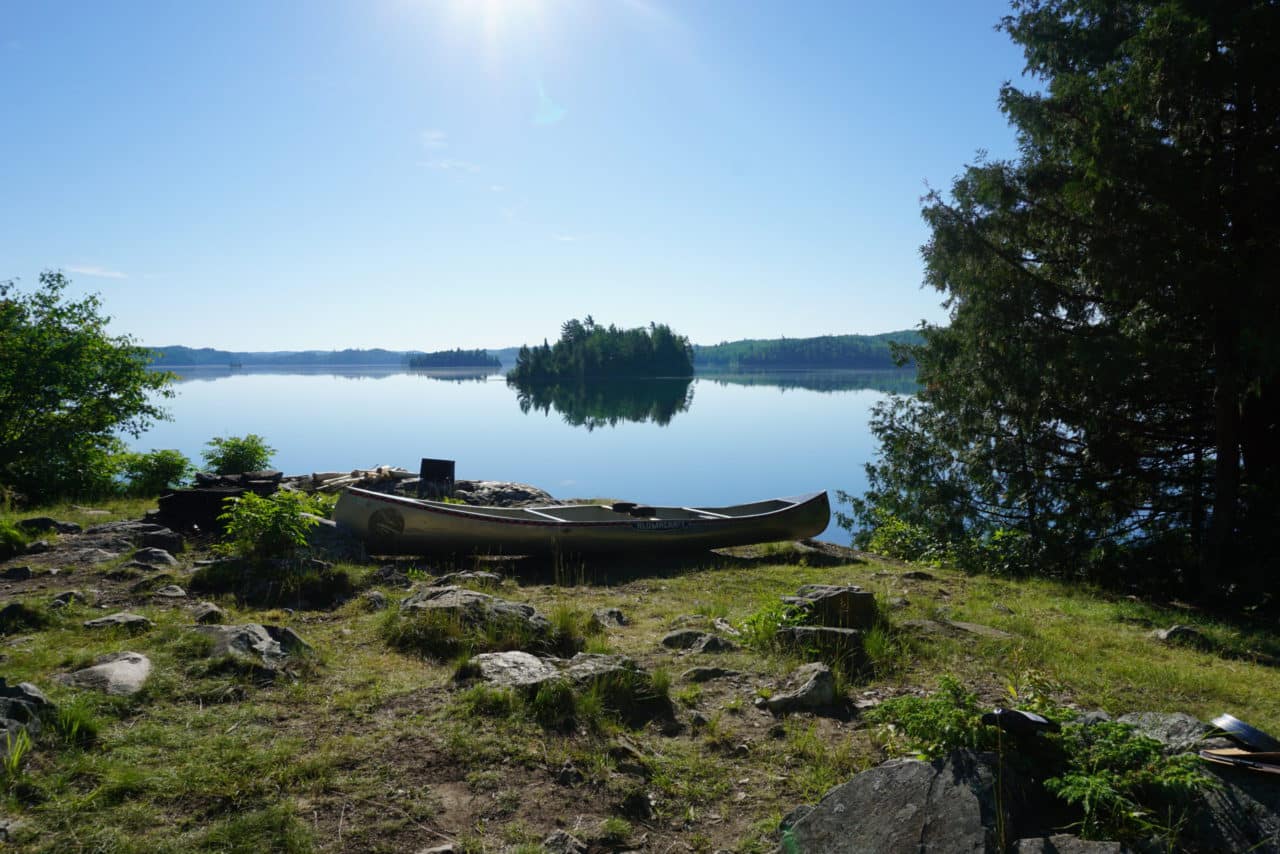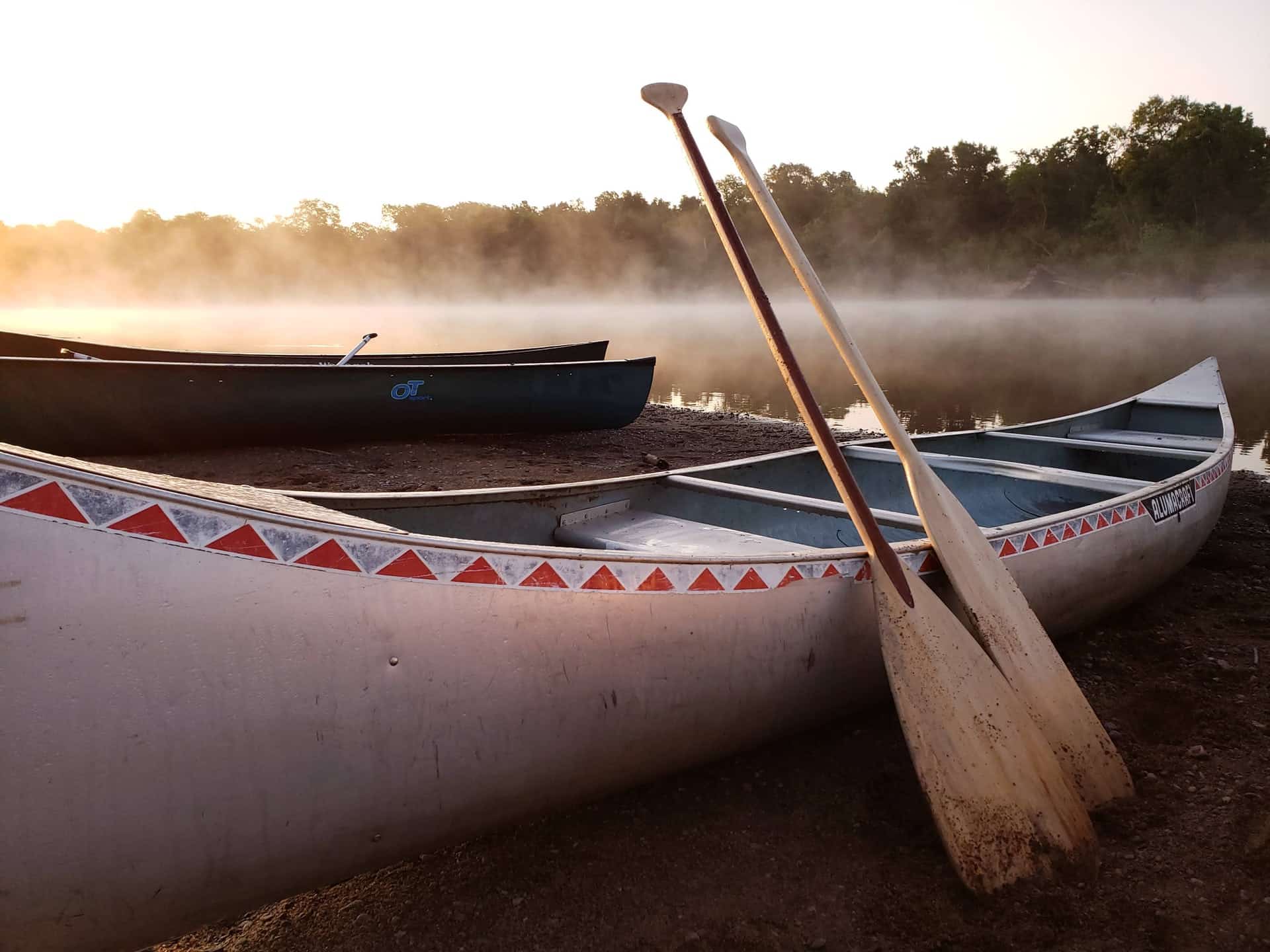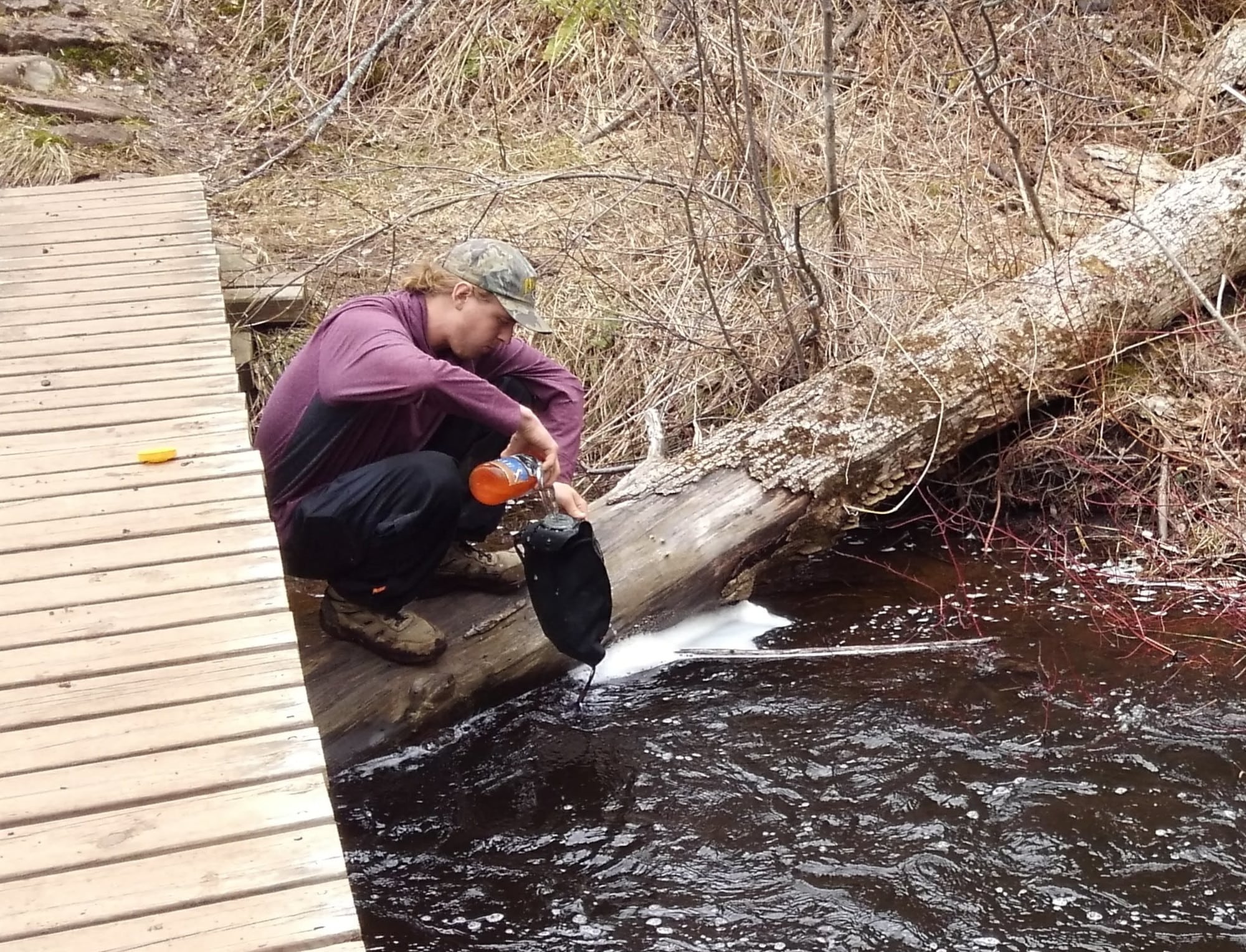The Boundary Waters is over a million acres of wilderness It occupies the lower portion of the Canadian Shield. Glaciers from the last ice age exposed bedrock and formed a myriad of lakes now connected by streams, waterfalls, and portages. It’s one of the most visited wilderness areas in North America.
This is a true story of a group of young Scouts who banded together to evacuate a severely injured 17-year old during a canoe trip in the Boundary Waters Canoe Area. The young men learned to think creatively and take leadership roles in order to conduct an evacuation out of Boundary Waters Canoe Area wilderness.
A Fun Trip in the BWCA Was Planned.
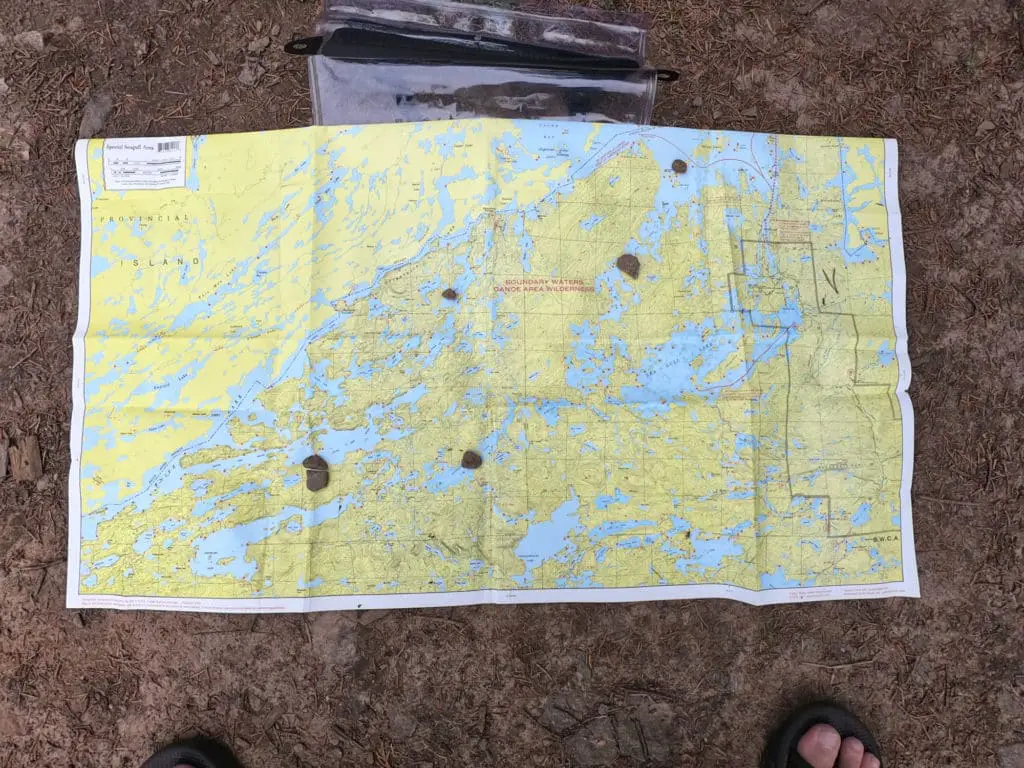
It was the summer of 2013—my second year of being an Interpreter ( canoe guide ) for Northern Tier High Adventure Canoe Base. I was given a crew from Maryland with a 7-day trip. My first impression of the crew was that they were goofy, energetic, and very friendly.
We planned and adapted a favorite route called Bear Loop. A standard east-bound BWAC trip. (Boundary Waters Canoe Area) enough to see some landmarks like historical grounds, high altitude overlooks, waterfalls, and good fishing amongst many more things. I even asked them whether they would like to do some cliff jumping, for I knew one of the best spots for it. They were very into the idea of jumping in the lake, so they agreed to add it to the list of things to do.
Now at this point, I knew the east trips the best. So I felt confident in navigating through it and going off of the interests of the crew. They wanted to see sights, waterfalls and go fishing mainly. So I formed an itinerary of the trip. The kids in the troop ranged from 15 to 17 years old—all capable of portaging and canoeing. So we planned an over 50 miler trip.
The first two days mainly taught the ways of canoeing, portaging, properly setting up camp, and packing it up. On the third day, we made our way to South Arm Knife Lake and set up camp at my favorite camp. This was the same campsite where I had my first bear encounter.
Simple Fun Turns into Crisis

The kids were all eager to go cliff jumping by the nearby islands. But I was still getting changed, and they didn’t know the drop-off areas. So I told them not to go to the Islands until I was ready. But kids being kids, they were too excited to wait and swam to the nearby islands. So by the time I was heading to the shore, they were all on the island, except two Scouts in a canoe near the island.
They were picking up the oldest kid in the crew. I asked what happened as they were at the camp shoreline. They said he fell on his knee. The advisor, a father of the kid who injured himself, started getting at him about not listening to me and being reckless.
We went to give him first aid. But when we looked at his knee, there was no cut, no blood, hardly much redness, and no swelling. We didn’t know precisely how injured he was at the time, hoping that he would quickly recover. So his father and I agreed to play it all by ear. We made sure he was sitting down with his leg elevated.
The Next Day the Crisis Deepens
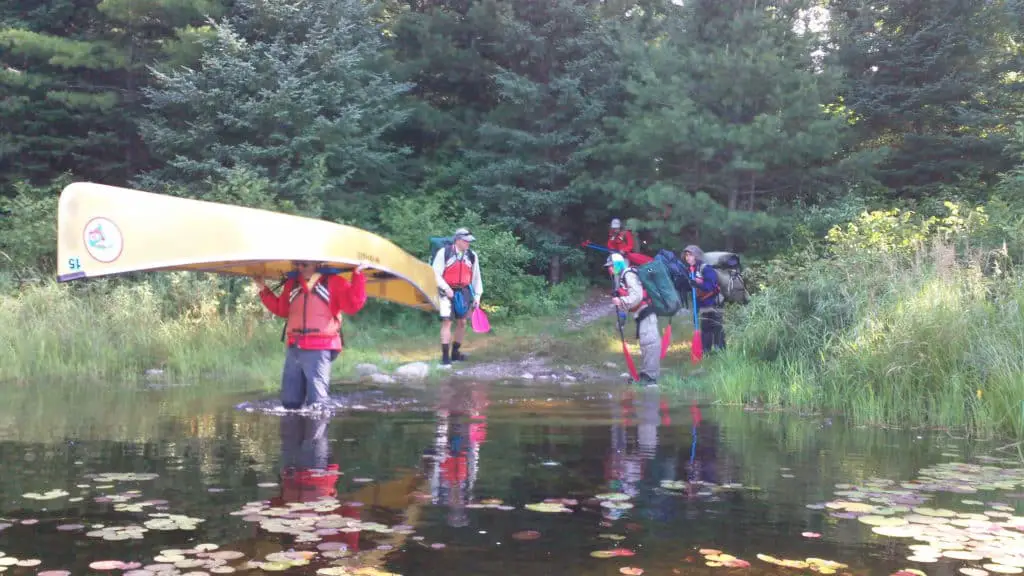
The next day in the morning, our injured scout was in worse shape. While getting out of the tent, he was in so much pain that he threw up. The intense pain was a clear sign something was wrong. The injury was way more than a bruise. He was in so much pain he was in tears. But again, there was no bruising, redness, swelling, or any other visible signs. His father, the advisor, pulled me aside to talk to me. He looked at me with fear in his eyes.
“Look, my son is a tough guy. He’s a linebacker and has a lot of pain tolerance. He once got stabbed through his hand and wasn’t phased at all. He even made a joke saying, ‘hey, would you look at that?”
At this point in talking to me, I could hear the tone of his voice change. “I’ve never seen him in this much pain before. Something is really wrong. He’s crying, and he is the type of boy that normally never cries.” The urgency he had was a wake-up call to me. So I made sure we wrote down a S.O.A.P note for him. (Subjective, objective, assessment, and plan) His vitals were fine, and every objective sign said he was normal. But the pain he had was so intense it warranted an emergency radio call to base.
Radioing In for Help
I headed up to the highest elevation in the area I could reach and radioed into the Northern Tier Base. After relaying the information, they told me this boy’s situation was critical, and the injured kid had to be evacuated. Based on our location, they gave me instructions to move. “What you should do is pack up camp and head back west and camp as close as you can to the portages that connect you to Birch lake.” The base asked to make contact by radio when we had made it to that point.
The Evacuation Out Of Boundary Waters Canoe Area Trek Begins And Stops
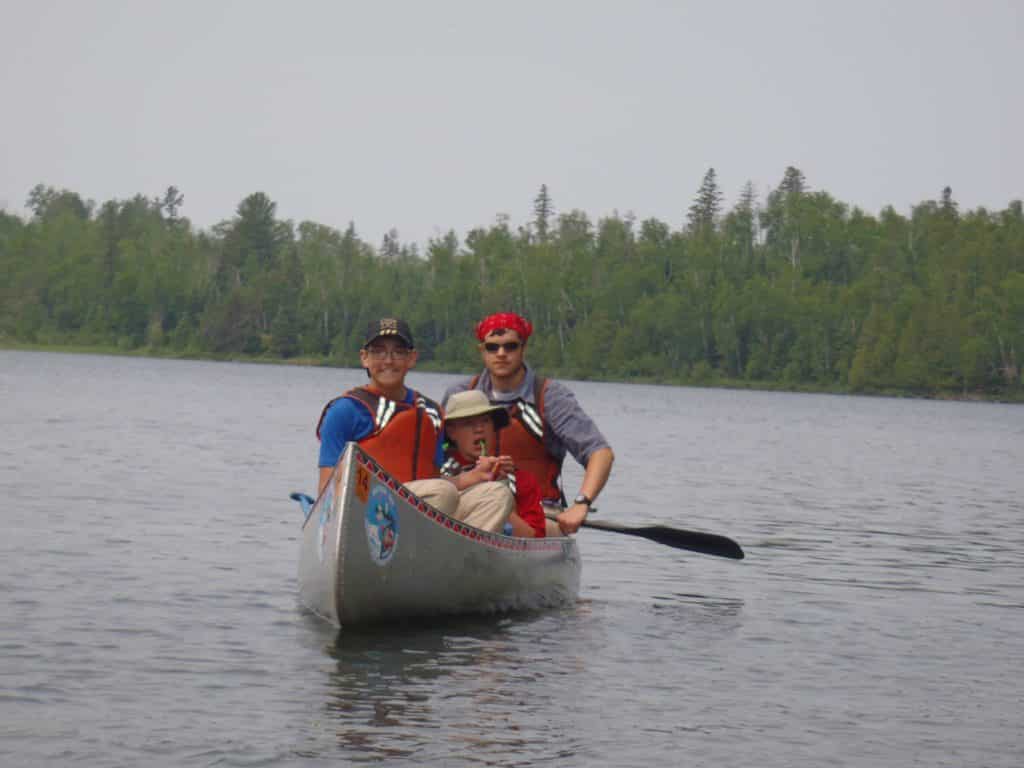
So I head back to camp to tell the crew the news. “We’ve got to pick up camp and head as close to the portages to Birch Lake as we could and camp there for the night.” They all quickly packed up camp. The crew had everything packed away except for our fallen camper. We helped him up and walked him closer to the canoe. He had one foot in the canoe when he yelled, “Stop!!!”
Tears were running down his face. Finally, he said he couldn’t do it. It was too painful to continue. It was at this point we were stuck between a rock and a hard place. He needed to transport him, but any slight movement in his leg caused him extreme pain. His father suggested that he try to get a float plane sent to pick him up.
An Appeal For an Evac By Plane
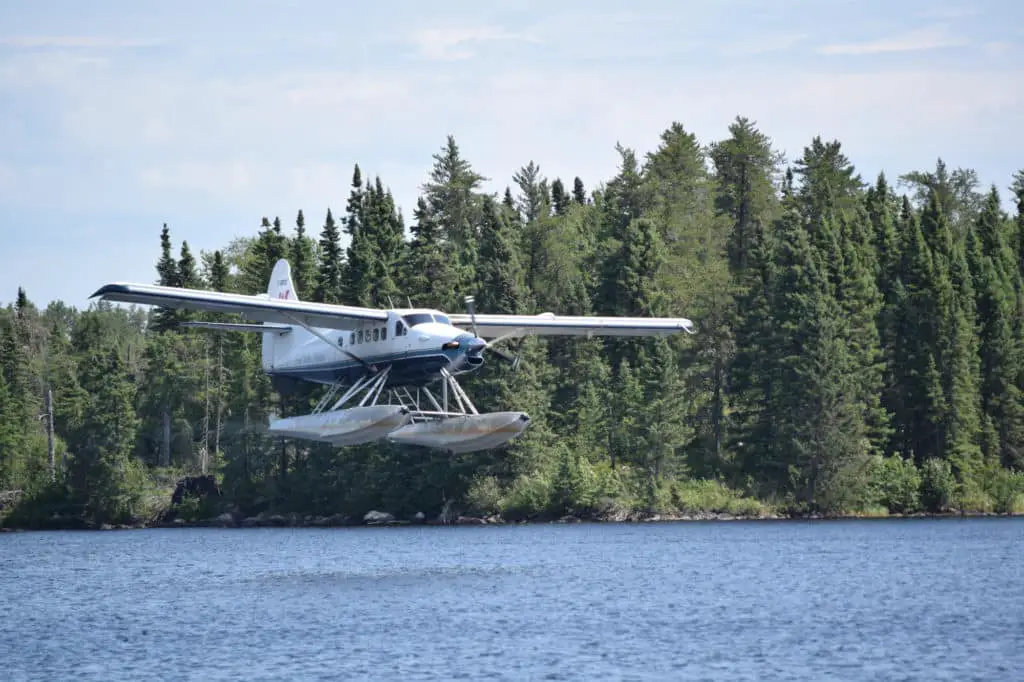
With the young Scout unable to move and his parent requesting immediate help, I needed more resources and advice. I radioed back to base to tell them we couldn’t transport him because he was in too much pain.
The answer I got back was a surprise. Northern Tier informed me that they could not send in a floatplane because the injured scout’s life wasn’t in immediate danger. He said that we needed to do whatever we could to make the kid’s knee from moving too much and that we needed to canoe to the portages.
A Six Portage Evacuation with an Injured Crew Member
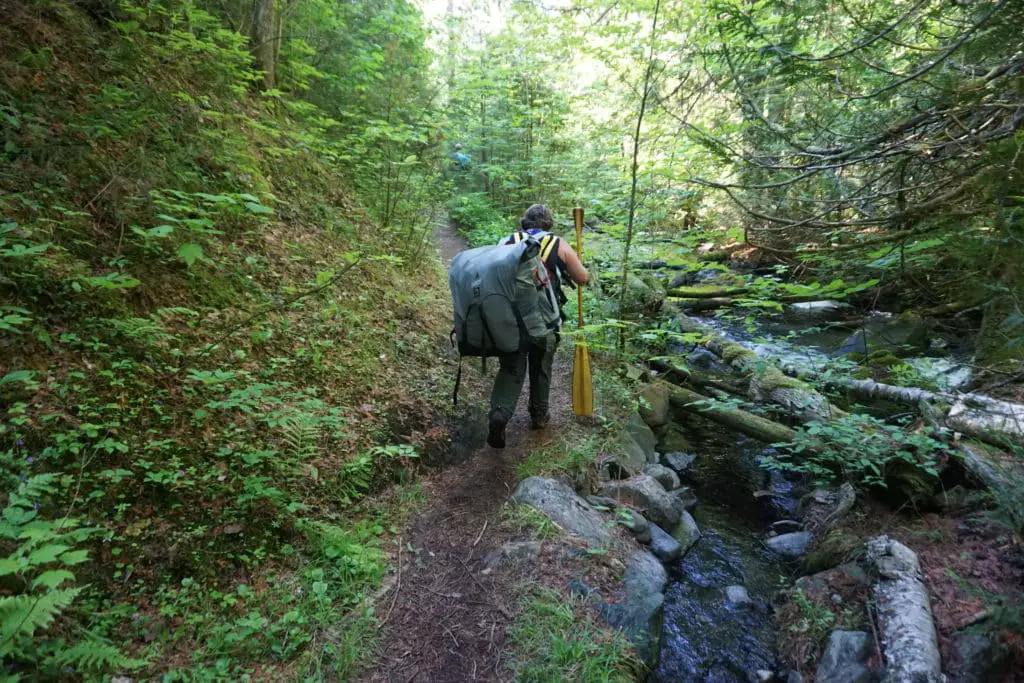
With this information, our plan changes. First, the crew makes a quick lunch. Next, we made a stretcher with two steady thick branches and our dining fly. After that, the plan was to paddle with all our gear and canoes across each lake to our extraction point. Then with the whole crew’s help, carry him in the stretcher across each portage in route.
This plan was not an easy one. I was 20 years old, was over 150 pounds, and I still didn’t weigh as much as our injured 17-year-old. But, on the other hand, he was big, and using a stretcher even to cross one portage would be very strenuous. First, however, to get to Birch Lake, where the evacuation boat would be, involved going across six portages. Four of the portages were short and easy to cross; however, the first and last portages were around half-mile long.
When I came back to the camp, I had a level of determination to get this plan executed to the best of our ability. We need to get to bed early and pack up camp at the crack of dawn to make our evacuation journey. I told them that it would be hard, it would be long and tiresome. But we simply had no other choice. The father asked if we would take his son in our canoe because we were the most competent paddlers.
We made a makeshift brace for his knee. It was fashioned to minimize movement and allow him to be placed in a canoe and moved out with ease. Finally, we got two stable branches for the stretcher. We were all set for the long day ahead of us. In the morning, I radioed back into the base and continued to radio in periodically while we made it to our destination.
That night I had an exhausting stress dream. I was dreaming that I was wide awake in my tent, just waiting for my alarm to wake me up.
Evacuation – A Day Of Headwinds
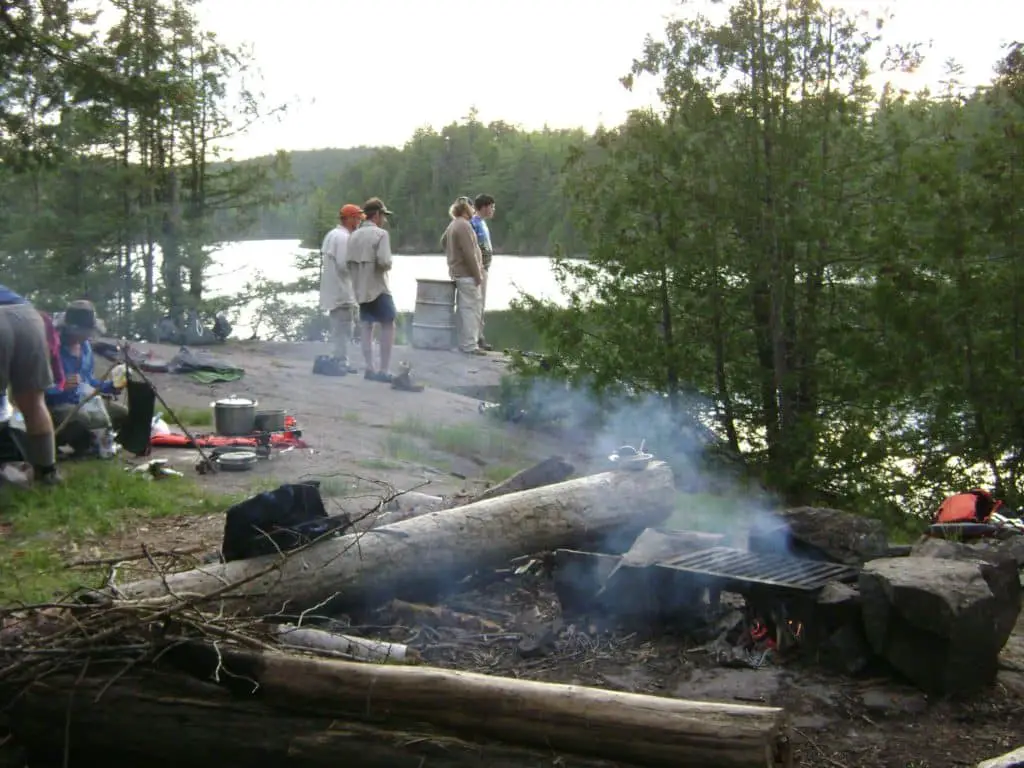
After a night of restless sleep, I requested a strong pot of coffee and went off to the radio base. Once back, I chugged the strong black coffee and helped pack up camp. One of the last things I did before beginning our over 8-mile trek back to birch lake I went to find a small, sturdy stick.
After I found the perfect one, I walked over to our poor injured crew member. I told the injured scout what to expect. “I’m not going to lie to you. This isn’t going to be an easy day for any of us. This is going to be a painful experience. But, all your job is to stay awake, hang in there, and we’ll do the rest. I know it’s not much, but I’m giving you this bite stick. Every time we move you, I want you to bite down on this and grit through the pain. Are you ready?” He nodded his head, and we began our evacuation.
We moved him into the canoe’s center and set him down with his leg over the railing. He knew that there was no way around it, so he did his best to remain calm. His father said that he is the strongest paddling is on his right side and wasn’t going to alternate the entire time. I was OK with this, for I was very competent paddling either side. So we paddled all together, taking solid strides and staying in line.
We hit our first challenge in the evacuation out of Boundary Waters Canoe Area -headwinds. Now the advisor and I were OK with this strong headwind as I successfully corrected the course. However, one of our canoes where getting blown off course, and they weren’t good enough paddlers to stay with us. We quickly went back told the other two canoes to switch paddlers who were better off. They changed some roles more appropriately, and we continued.
First Portage
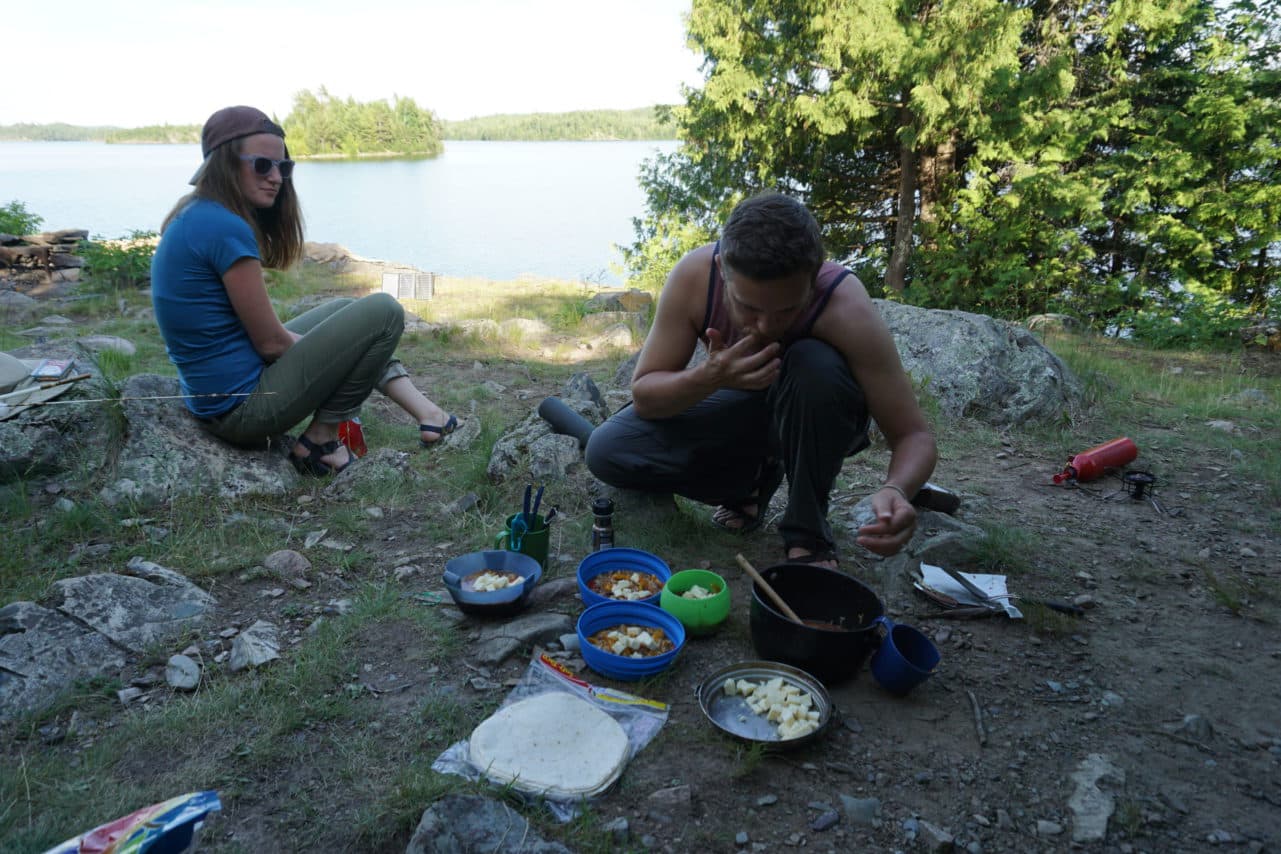
After paddling for some time, we stopped at the nearest campsite close to the portage we would use. We quickly ate lunch, made our stretcher, and approached the first portage.
Our first portage was the longest of the eight and was a very rocky path. Not ideal, but it was a flat enough elevation where we weren’t worried about moving him across. It was just going to take time. So now we first moved all of our gear, then the three canoes.
While our injured scout sat there for everyone to come back, he saw two people coming into the portage. They asked him what was wrong with him as they could see he had a brace over his knee. He said he fell on his knee and had to be stretchered across the portages to evacuate. Being rather indifferent, they said good luck and portaged across, which, if anything, was lousy portage etiquette—not waiting for us to finish our trip.
Stetcher Carry is Difficult
Our first time moving him with a stretcher was very difficult. We had to move him as far up as possible and set him down only when the path wasn’t jagged and rocky. We picked him up, moved, and set him down many times before noticing two guys behind us.
They asked, “Hey, what’s going on?” We told them we had to evacuate our injured crew member and make it through the six portages. “Do you need some help?” We enthusiastically all said yes, and the two men helped us move him to the end of the portage. After they helped us, they went on the rest of their trip, and we continued our trek. “The worst of it is now behind us, boys.” I said to the crew. “one down.”
After doing this, three more portages we were all getting worn out. Our injured scout was getting loopy and cracking jokes. “You guys are so strong. You’ll be so ripped girls will just swarm all you guys.” We laughed and tried to just push our way through it. We were even singing during the last portage.
Equipment Stress and Failure
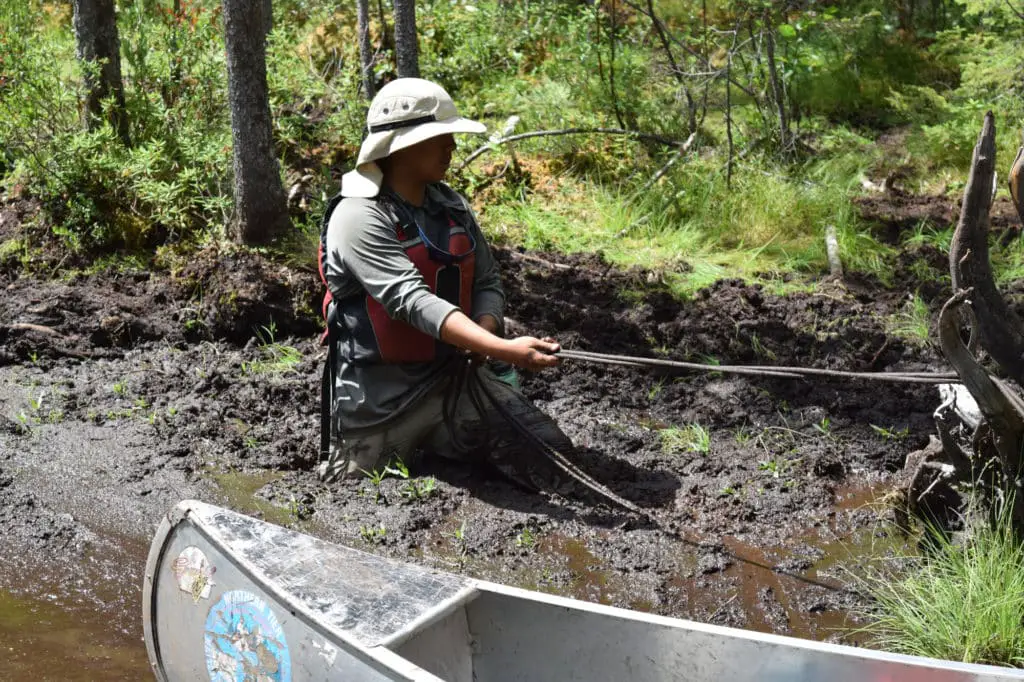
At this point, some of our crew members are getting exhausted. They couldn’t hold the stretcher up high enough over the rough terrain. As a result, the stretcher dipped low enough for a sharp rock to hit the bottom of the dining fly and cause a rip. Our injured Scout managed a funny yelp, and we set him down. We had no choice but to keep going forward. However, the more we moved, the more the bottom began to rip. We kept this up until his butt was nearly through the rip.
The End of the Ordeal In Site
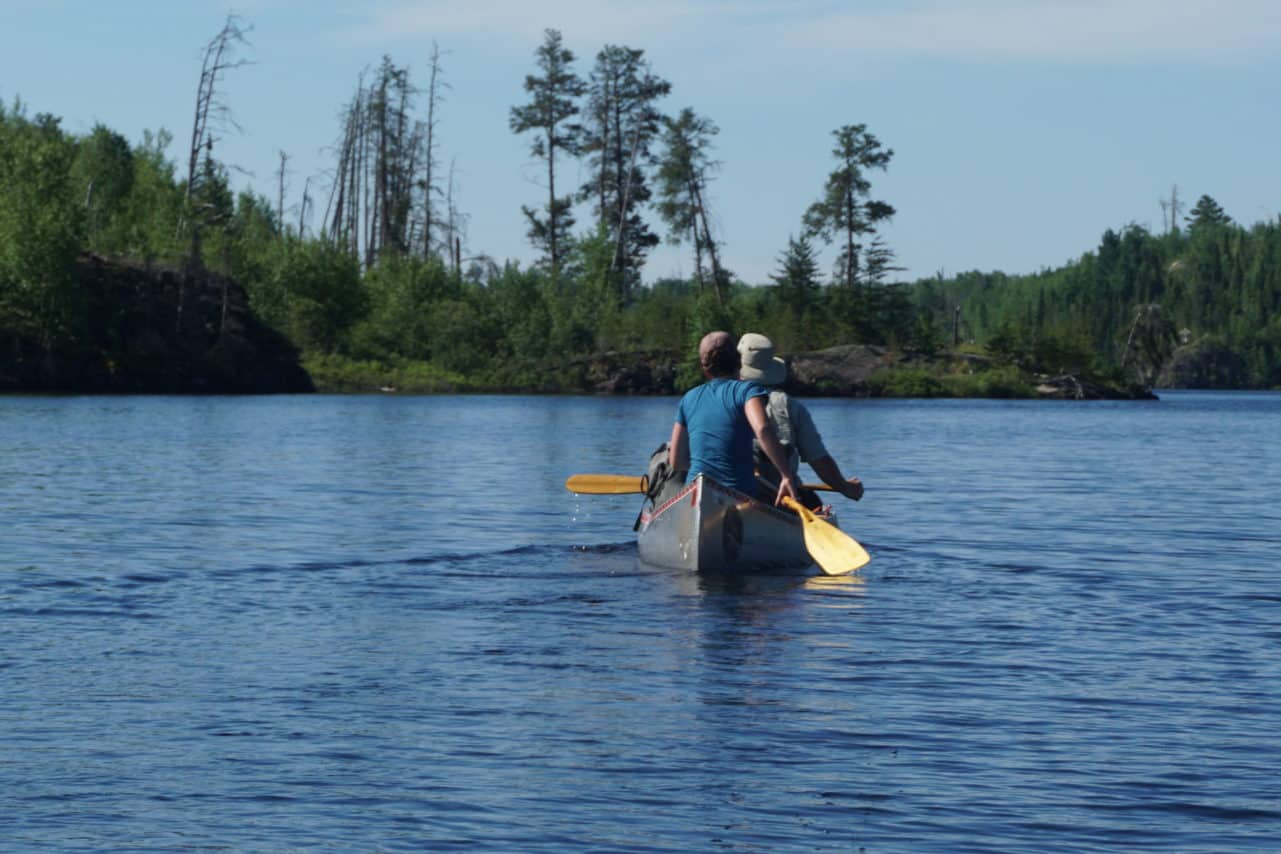
We were nearing the end of the last portage, and we could see Birch lake. We all had a boost of energy seeing that beautiful shore, and it meant sweet relief. It was almost over. However, during one of the last times we picked him up, not everyone on my side lifted at the same time. II felt both muscles in my arms snap. I went, “Aaah! Put him down!”
We set him down, and they asked what was wrong. I told them how I felt like I just tore both my arms muscles like a snapping rubber band. They asked if we should stop. I refused as we were almost there and were nearing our time slot for the evac. So with my burning, aching arms, I helped lift him to the shore and into the canoe one last time.
Success At the Evacuation Point
We all cheered and celebrated with a sense of victory while I radioed into the base that we finally made it to Birch lake. I was told that they were on their way and had about 15 minutes to paddle him to the tiny portage where he was getting picked up. Like madmen, we furiously paddled as fast as we could to the evacuation point. My arms were like jelly. Every paddle stroke was torture. I pushed through and we made it to the site five minutes to spare.
The boat arrived and picked up both the scout and his father, and they took off to the Ely-Bloomenson Community Hospital.
We went to the nearest camp. We had dinner, and I felt like a zombie. We were all exhausted but happy that the whole ordeal was over. When I woke up in the morning, it felt like I was hit by a truck. My entire body ached head to toe. We all agreed to head somewhere close by the base and just have a relaxing day by some rapids. We swam the rapids, told jokes, and enjoyed our last day of the trip.
Afterlog
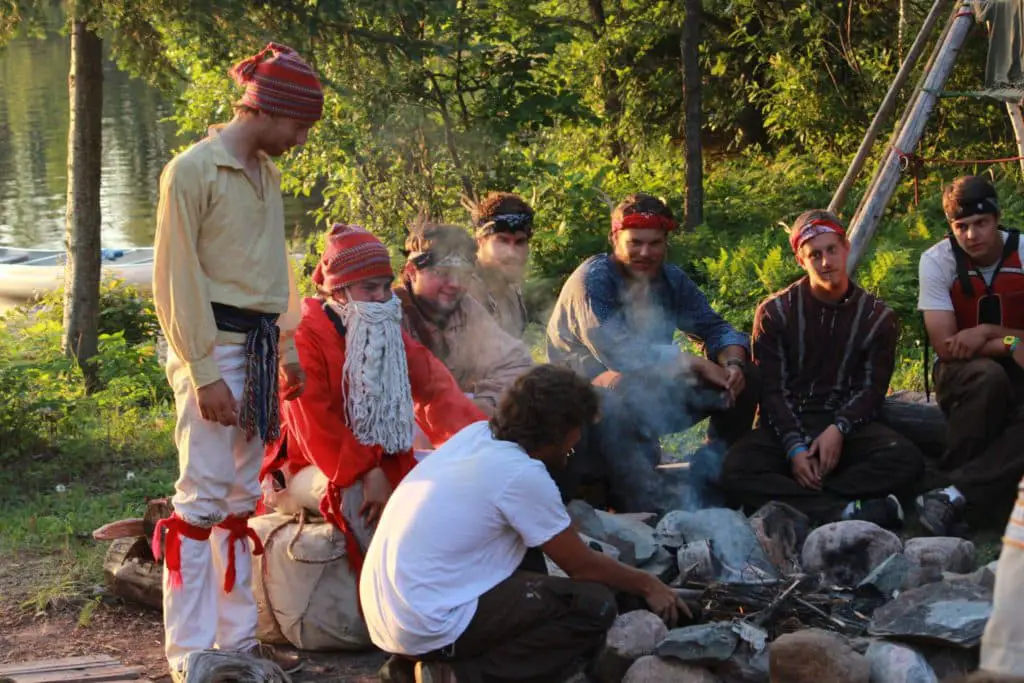
When we finally reached Northern Tier, our friend was waiting for us by the landing site with an entire leg cast. When he fell on his knee, it chipped a bone right next to a nerve. Anytime his leg moved, the chipped bone would graze his nerve. The doctors said if he had shown up a day later, he could have had permanent nerve damage in his leg for the rest of his life.
The entire crew received a National Certificate of Merit from the Boy Scouts of America for our aid for our evacutuation out of Boundary Waters Canoe Area. I will never forget that crew, how we banded together, overcame this severe ordeal, and saved their buddy from irreversible damage. Even in the face of a massive challenge, you can overcome it. When it gets hard, don’t give up because we had no choice but to endure in that situation. When you band together and put your all into it, you can accomplish amazing things.
Related Reading – Evacuation Out Of Boundary Waters Canoe Area
5 Canoeing Skill Videos For Your First Boundary Waters Trip
Boundary Waters Camping During Storm Season
